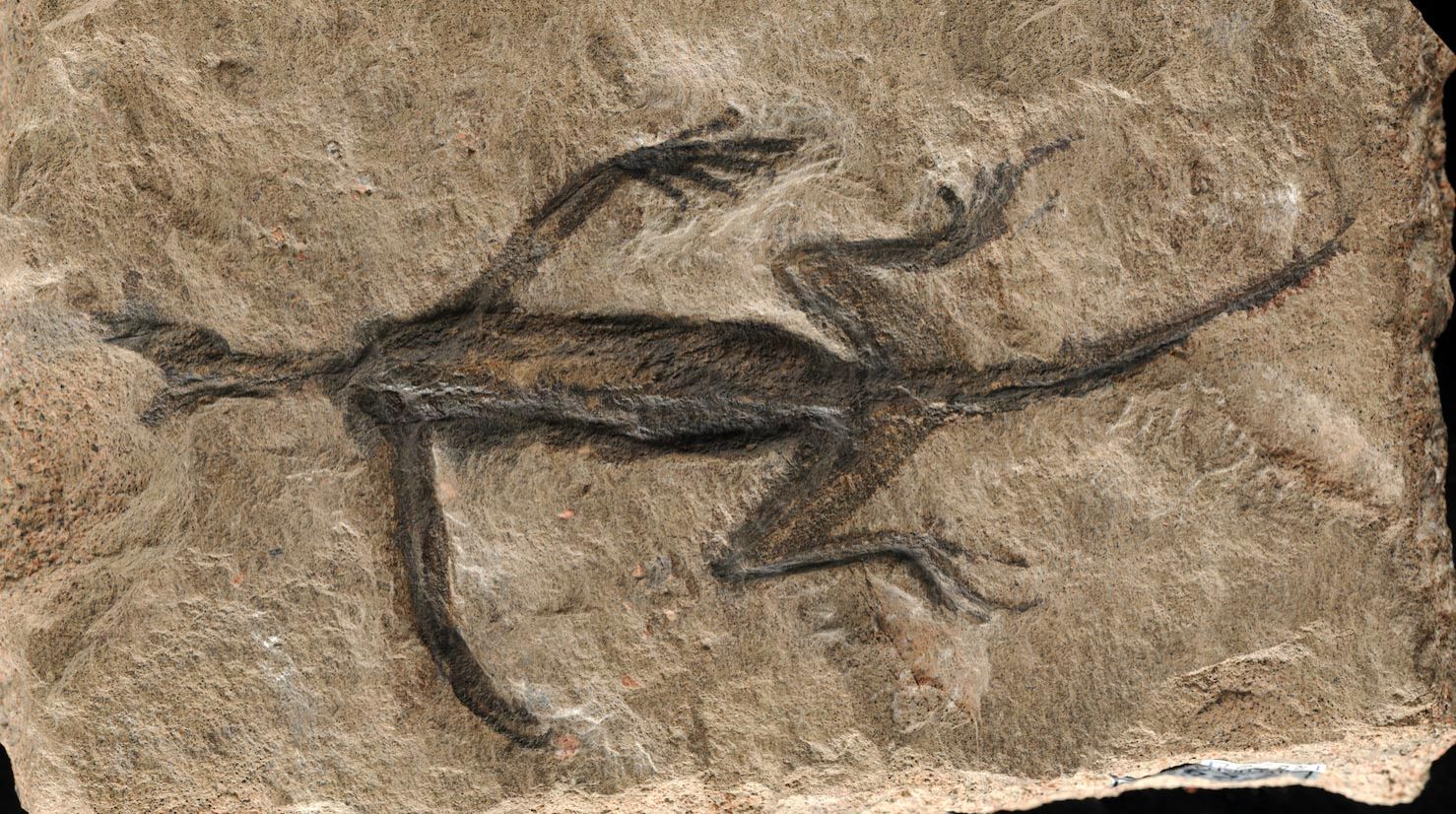Nearly 100 Years Later, This Exceptional Fossil Proves to Be a Hoax
Follow us on Google News (click on ☆)

Credit: Dr. Valentina Rossi
Recent microscopic analysis has shed light on the fact that the black substance covering the fossil did not match the texture and composition of authentic fossilized soft tissues. This revelation is the result of meticulous work involving the use of UV photography, which revealed that the specimen had been coated with a material. Although the practice of coating fossils with varnishes or lacquers has been common in the past for their preservation, here it masked the true nature of the piece.
What has long been interpreted as the exceptional preservation of soft tissues turns out to be a clever staging, with the dark silhouette of the Tridentinosaurus having been intentionally painted on the rock. This hoax deceived many researchers about the true nature of the specimen.
Nevertheless, the study also yielded positive discoveries. Although the majority of the fossil has been falsified, some parts, such as the bones of the hind limbs and bony scales called osteoderms, appear to be genuine, albeit poorly preserved. These elements suggest that the Tridentinosaurus had body features similar to those of modern crocodiles.
This turn of events emphasizes the importance of modern analytical methods in paleontology, allowing the unraveling of nearly century-old puzzles. Caution is now warranted when this specimen is used in future research.
The international collaboration, including researchers from the University of Padua, the South Tyrol Museum of Nature, and the Museo delle Scienze in Trento, underscores the importance of a rigorous and methodical approach in the reevaluation of historical fossils.